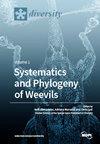Tham Chiang Dao: A Hotspot of Subterranean Biodiversity in Northern Thailand
IF 2.1
3区 生物学
Q2 BIODIVERSITY CONSERVATION
引用次数: 0
Abstract
The Doi Chiang Dao massif, which became a UNESCO Biosphere Reserve in 2021, is the highest karst mountain in Thailand. Tham Chiang Dao cave is located at the foot of this massif and is among the best-known caves in Thailand, having been visited since prehistoric times, and being a sacred place for the local Shan and Thai people. The cave consists of five main interconnected passages with a total length of 5342 m which ranks it as the 11th longest cave in Thailand. Tham Chiang Dao is the best studied cave in Thailand with a long series of explorations, investigations and zoological collecting. Here, we summarize the 110 years of biological exploration and investigation devoted to this cave. A total of 149 taxa have been recognized in Tham Chiang Dao, of which 61 have been identified to species level. The cave is the type locality for 14 species. The obligate subterranean fauna includes 37 species, of which 33 are troglobionts and 4 are stygobionts. Conservation issues are addressed in the discussion. This work is intended to provide a reference for the knowledge of cave fauna of the Chiang Dao Wildlife Sanctuary and a tool for its management by the local cave management committee, the National Cave Management Policy Committee, and the Department of Mineral Resources. It also documents the biological importance of Tham Chiang Dao in the Doi Chiang Dao UNESCO Biosphere Reserve.谭清岛:泰国北部地下生物多样性的热点
土井清道山于2021年被联合国教科文组织列为生物圈保护区,是泰国最高的喀斯特山脉。谭清道洞穴位于这个地块的脚下,是泰国最著名的洞穴之一,自史前时代以来就有人参观,是当地掸族和泰国人的圣地。洞穴由五个主要的相互连接的通道组成,总长5342米,是泰国第11长的洞穴。谭清道是泰国研究得最好的洞穴,经过了一系列的探索、调查和动物收集。在这里,我们总结了110年来对这个洞穴的生物探索和调查。谭江岛共鉴定出149个分类群,其中61个已鉴定到种级。该洞是14种植物的典型生境。专性地下动物群包括37种,其中穴居动物33种,穴居动物4种。在讨论中讨论了保护问题。本研究旨在为了解清岛野生动物保护区洞穴动物提供参考,并为当地洞穴管理委员会、国家洞穴管理政策委员会和矿产资源部的洞穴动物管理提供工具。它还记录了谭江岛在土江岛联合国教科文组织生物圈保护区中的生物重要性。
本文章由计算机程序翻译,如有差异,请以英文原文为准。
求助全文
约1分钟内获得全文
求助全文
来源期刊

Diversity-Basel
Environmental Science-Ecological Modeling
CiteScore
3.40
自引率
12.50%
发文量
925
审稿时长
11 weeks
期刊介绍:
Diversity (ISSN 1424-2818) is an international and interdisciplinary journal of science concerning diversity concept and application, diversity assessment and diversity preservation. It is focused on organismic and molecular diversity. It publishes reviews, regular research papers and short notes in the regular issues. Related news and announcements are also published. Our aim is to encourage scientists to publish their experimental and theoretical results in as much detail as possible. Therefore, there is no restriction on the length of the papers. Full experimental details must be provided so that the results can be reproduced.
 求助内容:
求助内容: 应助结果提醒方式:
应助结果提醒方式:


